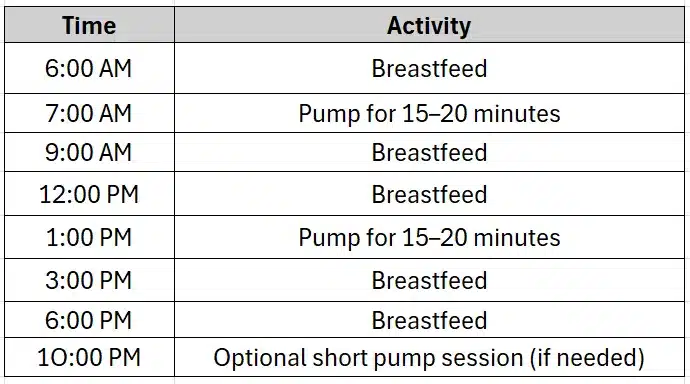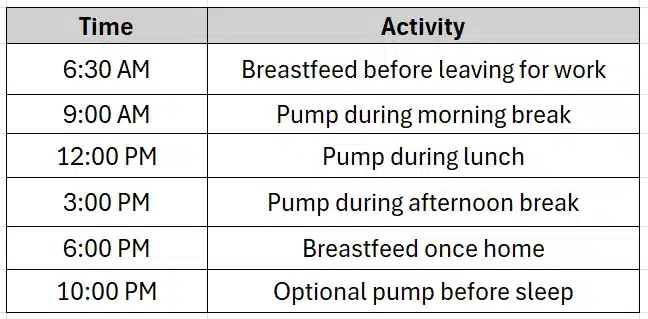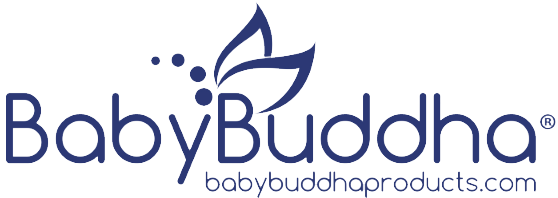Breastfeeding and Pumping Schedule for New Moms

Trying to figure out a breastfeeding and pumping schedule can feel like a full-time job on its own. You’re healing, learning your baby’s cues, and trying to keep up with feedings, sometimes while running on barely any sleep. It’s a lot.
If you’re here, you might be wondering how to fit pumping into an already unpredictable routine. Maybe you’re preparing to return to work, hoping to build a stash, or just trying to keep your supply steady. But between feeds, naps, and cluster sessions, it can feel confusing to know where to start.
In this Mama Talk guide, we’ll walk through what a balanced breastfeeding and pumping schedule can look like, along with gentle sample routines, tips for building supply, and how to stay flexible when real life doesn’t follow the plan.
Key Takeaways:
- Creating a consistent breastfeeding and pumping schedule can help maintain milk supply and reduce stress.
- Sample routines are available for newborns, working moms, and exclusive pumpers to fit different lifestyles.
- You can successfully combine nursing and pumping with thoughtful timing and gentle flexibility.
- Listening to your body and your baby’s hunger cues is key to building a sustainable routine.
- Planning for night feeds, returning to work, or milk storage can make the transition smoother.
When Should You Begin Pumping?
The timing really depends on your journey and what feels right for you and your baby.
If your little one is nursing well and you’re planning to stay home for a while, many moms find that starting to pump around 3 to 4 weeks postpartum works best. It gives your milk supply time to regulate, and your baby time to settle into latching.
But for some, pumping needs to begin sooner. You might be:
- Managing an unexpected stay in the NICU (Neonatal Intensive Care Unit), where direct nursing isn’t yet possible
- Preparing to head back to work and hoping to build a freezer stash
- Choosing to exclusively pump from the beginning due to latch issues or personal preference
Whatever your reason, you’re not alone in figuring it out. In fact, the CDC reports that nearly 60% of new moms stop breastfeeding earlier than planned, often because of challenges like supply dips or trouble keeping up with a schedule.
Knowing when and how to introduce pumping can take some of that weight off your shoulders.
How to Balance Breastfeeding and Pumping in Real Life

Managing both breastfeeding and pumping can feel overwhelming, especially when you’re sleep-deprived and trying to figure out what works best for you and your baby. These gentle, real-life tips can help you find your rhythm:
- Nurse first, pump after: Let your baby feed first, then follow up with a short pump session to help stimulate supply and collect extra milk.
- Use warm compresses or massage before pumping: A little warmth or breast massage can make let-down easier and improve flow.
- Try hands-on pumping: Gently compressing your breast while pumping can help you express more milk, especially helpful in the early weeks.
- Create a cozy, ready-to-go space: Keep your pump, parts, snacks, water, and nursing pads close by so everything’s within reach when you need it.
- Use slow-flow nipples and paced feeding: If someone else is giving a bottle, paced feeding can help avoid nipple confusion and keep baby comfortable.
- Look at your baby or a photo while pumping: This can help trigger your let-down reflex and create a comforting connection.
What Does a Breastfeeding & Pumping Combo Schedule Look Like?
Your routine might depend on whether you’re staying home, working remotely, or going back to the office. Here are sample schedules to help you see how a breastfeeding-pumping combo can flow throughout your day.
1. Sample Daily Routine: Nursing + Pumping Combo
This setup supports both feeding and building a small freezer stash. It’s especially helpful during growth spurts or if you’re trying to increase supply.

2. Back-to-Work Schedule: Staying Connected While Apart
This one’s ideal for moms returning to work. Pumping during breaks helps maintain supply and avoid discomfort while you’re away from your baby.

Why These Schedules Work?
- Pumping every 2.5 to 3 hours mimics your baby’s natural feeding rhythm.
- Nursing in the morning, when supply is usually highest, makes it easier to collect extra milk.
- Evening or bedtime pumps can support your body’s nighttime production and help with long stretches of sleep.
- Having a loose routine helps create predictability, while still giving you room to follow your baby’s cues.
What If You Miss a Pumping Session?
Life happens. The nap goes on long. The meeting runs late. The moment slips by. And suddenly, you’ve missed a pump.
Here’s what matters most:
- It’s okay, flexibility is key: One missed session doesn’t undo all your work. You’re still doing great.
- Try to pump at the next convenient time: When the moment opens up, before bed, during a break, or even while holding your baby, just pick it back up.
- One missed session won’t ruin your supply: Your body is resilient. Consistency helps, but grace keeps you going. Missing one isn’t the end of your rhythm.
Tips to Make Pumping and Breastfeeding Work for You

Balancing pumping and breastfeeding isn’t about being perfect; it’s about finding what feels sustainable for you. Here are some gentle, helpful tips to keep in your corner:
- Use hands-free pumps to simplify multitasking: Whether you’re replying to messages or just enjoying a warm cup of coffee, hands-free options make pumping feel less disruptive.
- Track sessions only if it helps, not if it adds pressure: For some moms, jotting down sessions brings clarity. For others, it becomes another to-do. Listen to what feels right.
- Hydrate, eat, and rest, your body needs it: Milk-making is hard work. Keep a water bottle nearby, snack often, and grab rest whenever you can (even if it’s just closing your eyes for a minute).
- Store milk safely with labeled freezer bags: Keeping a little stash can ease stress on busy days. Label bags with the date and time to stay organized.
- Set realistic goals: even one pumped bottle is helpful: There’s no rulebook. Every ounce counts. Every effort matters. What you can do today is enough.
Covered Pumps Can Lighten the Load
When life with a newborn feels like a constant juggle, having the right pump, especially one covered by insurance, can quietly ease the pressure.
- It’s about meeting your needs: Whether you’re building a stash or just starting to pump, access to the right pump (without the extra cost) can make a real difference.
- Lactation support helps, too: Some plans include access to lactation consultants, giving you guidance, reassurance, and someone to lean on when you’re unsure.
- Small support, big impact: Flexible schedules, gentler days, and a little more ease, that’s what the right tools can offer.
Curious what’s covered? Checking your options through Insurance Covered Breast Pumps is a simple, no-pressure first step.
Final Thoughts
There’s no perfect schedule. And definitely no rulebook that covers every emotion you’ll feel on this journey.
Some days you’ll pump like clockwork. Other days, everything will feel off, and that’s okay. What matters is that you’re showing up, finding your pace, and doing your best with the energy you have.
And if today felt hard, just know tomorrow is a fresh start. You’re not alone in figuring this out, and you never have to do it all perfectly to be a wonderful mom.
FAQs
1. How often should I pump if I’m also breastfeeding?
Aim to pump after a nursing session or in between feeds, especially if you’re building a freezer stash or returning to work. Every 2–3 hours during the day is a good rhythm to start with.
2. Can I skip a pumping session if I’m too tired or busy?
Yes, missing a session occasionally won’t ruin your supply. Just try to pump at your next convenient window and give yourself grace.
3. When is the best time of day to pump?
Many moms find early mornings work best since milk supply tends to be higher. But the “best” time is the one that fits your life and feels least stressful.
4. Do I need to wake up at night to pump if my baby sleeps through?
Not necessarily. If your supply is stable and baby’s thriving, enjoy the sleep. If you’re trying to maintain supply, a gentle night session can help but it’s not required for everyone.
5. Can I combine pumped milk from different sessions?
Yes, once they’re both cooled in the fridge. Be sure to label and store safely. Don’t mix warm milk into already chilled milk.
6. What if I only pump a little milk, does it still help?
Absolutely. Every ounce is valuable. Your body’s learning, and your baby benefits from even small amounts of breast milk.
7. Should I pump both breasts at the same time?
Double pumping can save time and support supply, especially for working or exclusive pumping moms. But single pumping works just as well if that’s what’s manageable for you.










